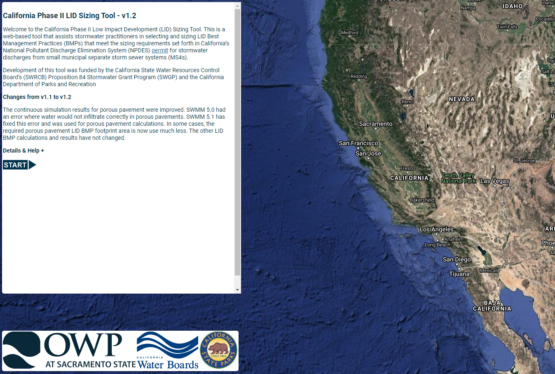California State Water Resources Control Board (CSWRCB) Statewide Phase II LID Sizing Tool
Watearth worked with the California State University Sacramento Office of Water Programs developing an online Phase II MS4 Permit LID Sizing Tool. The project was funded through the State Water Resources Control Board Proposition 84 Storm Water Grant. The tool was designed to be used for any area within California. The tool incorporates climate station data, soil saturated hydraulic conductivity, and site impervious area to determine LID permit compliance size. Three different sizing options were offered that are allowed by the California Phase II Permit. The methods are design-storm, percent capture, and baseline bioretention or equivalent performance. Watearth provided guidance and specifications input, including modeling for a range of events and sites across California in EPA SWMM and performing preliminary design and design configuration optimization. A variety of storm water treatment measures were analyzed, including but not limited to dry infiltration wells (also referred to as infiltration gallery), bioretention, infiltration trenches, infiltration basin, and vegetated swales.
The tool is located at owp.csus.edu/LIDTool/.

